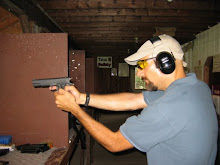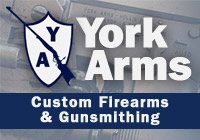I did learn a couple things. First, factory reloads can be "cool" loads (loaded with less propellant). Not really a problem there - it makes the ammunition a bit less expensive and it makes the round a little slower. I guess that it's possible that some ranges like that, although it probably doesn't make enough difference to tell.There's a couple things to note here. There's a place in NH, M&M Reloads, that I've used for mainly revolver reloads, .357 Magnum and .38 Special. They have (had? It's been a while since I've been to a gun show to pick up some ammo) both FMJ and WC .357 Magnum and .38 Special available at very reasonable prices. I've found their ammo to be at least as reliable as factory ammo - and in some cases (*cough* S&B *cough*) more reliable.
However, your gun might care. Less propellant means less energy, which means that the recoil spring will compress less than it would on a hotter load. My 1911 had been having intermittent problems where the slide didn't return to battery (the firing position). It would once in a while stop about a quarter inch from where it would in a full cycle. Pull the trigger, no bang.
The .357 Magnum is noticeably less powerful than commercial .357 Magnum rounds, something I've merely observed from shooting. It's not a deal-breaker; it doesn't mean the ammo is bad by any stretch, just that I've noticed the same thing on reloaded ammunition that Borepatch noticed. If pressed to explain, I'd guess that reloaders err on the side of caution, putting in the lower end of the powder range to avoid overpressure.
The bigger issue, though, is kind of hinted at in Borepatch's post, but something I wanted to expound on. He initially thought that something was wrong with his gun - he was loading a magazine, pulling the trigger, getting a bang, and then it wasn't going fully back into battery. The lower power of the round wasn't enough to fully work the action and completely chamber a new round. Borepatch realized what was going on, switched to factory ammunition, and this cured the problem - but he could very well have brought the gun to a gunsmith to have it checked out, and no one would have faulted him for doing so.
I had an analogous issue with my Gold Cup a few years back. All of a sudden, it stopped locking the slide back on the last round fired out of the magazine. I started imagining all the different causes and problems the gun could be having; worn parts, tolerances exceeded, etc. when I realized that there was a much simpler cause: New grips. I had installed a new pair of beautiful walnut grips that just happened to be slightly oversized and impacted the slide release. Five minutes with ultra-fine sandpaper and it was working flawlessly.
If you have a problem with a gun, don't be afraid to take it to a professional. There's a lot of excellent gunsmiths (Paging Wally!) out there (and some in training) who will take loving care of your favorite blaster should it need work, and there is absolutely no shame in saying "this needs a professional's loving touch". But if something pops up suddenly, take a moment to ask if you've done something different that might have caused it, like using different ammo or putting on a new pair of grips.
And for the love of JMB (PBUH), leave the Dremel in the toolbox...
That is all.







6 comments:
But if something pops up suddenly, take a moment to ask if you've done something different that might have caused it
If I had a nickel for every time that's happened, I'd be able to buy a lot more ammo.
I could see commercial reloaders choosing to load slightly lighter since they're dealing with brass that's been fired at least once. Plus powder isn't cheap. If you shave a load by 5%, that's a free box out of every 20 you fill.
Dremel. Ahhhh! Just the sound of the word makes me want to do some gunsmithing.
Hey. HEY! Where did everybody go? It's better now, all fixed. Let's go to the range. You can shoot it first.
Your last comment is dead on. I (briefly) considered going to the Dremel myself. After all, what could possibly go wrong?
Fortunately, that fit of madness passed quickly. If I seem paranoid, it's because I was trained to be that way by the finest minds in the Free World.
;-)
Thanks for the ping Jay! It is usually no big deal to give a gun a once over to verify that it is okay, and if nothing is out of whack on the firearm, is is very easy to try a different load. AAMOF, for subtle fails, I will handload a few flavors to try and isolate or reproduce the fault.
Many of the commercial reloaders load for the person whom wants to shoot at paper. Lead round nose or full metal jacket, not for hunting nor fine marksmanship nor for defense. As such, they may find their way into some guns that are past their prime- so these loads are mild to not push the limits. That box of 9mm reloads may go into a new Sig, or into great grandpa's red-9 broomhandle... Some cartridges are really turned down (.38 S&W) and some are identical to factory(357sig).
Yeah when I was in the 1911 class with Vickers & Hackathorn, they said you should be licensed to own a dremel tool
Iit depends on the reloader, remanufacter, I've used Acme, and they run like factory, and a local guy who gives me reloads in exchange for the brass on my range, loads to factory specs, have not had a short cycle from ether one
I received pictures and text today of a 629 kaboom. Nasty.
I'll email to you as I don't know how to attach.
Bottom line, Chink ammo.
Post a Comment